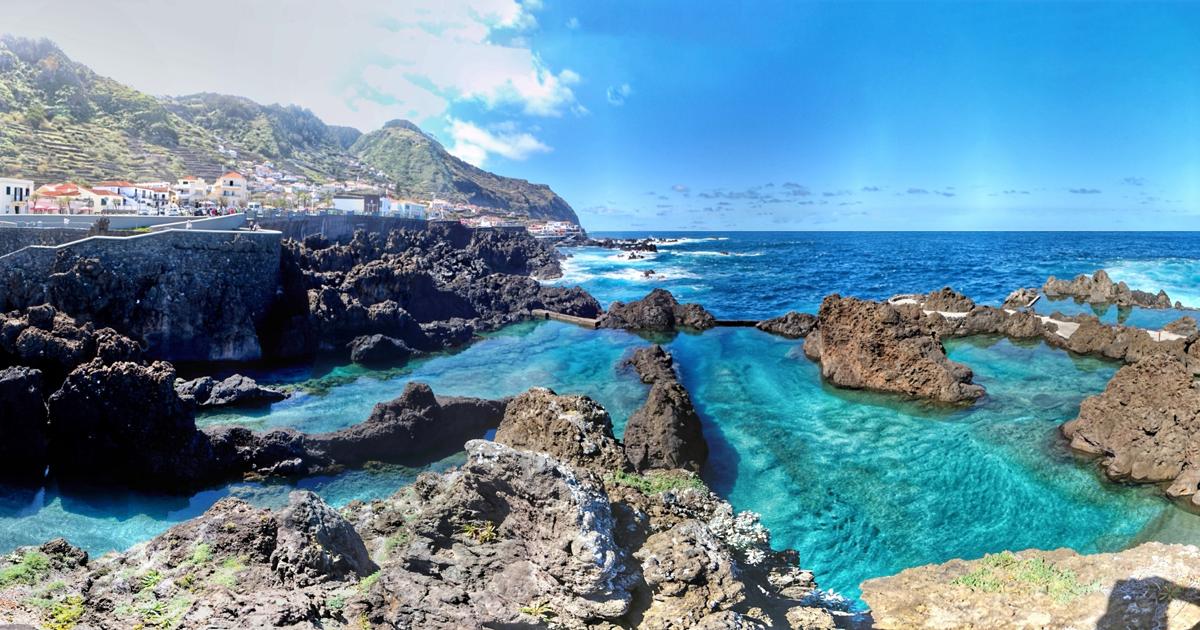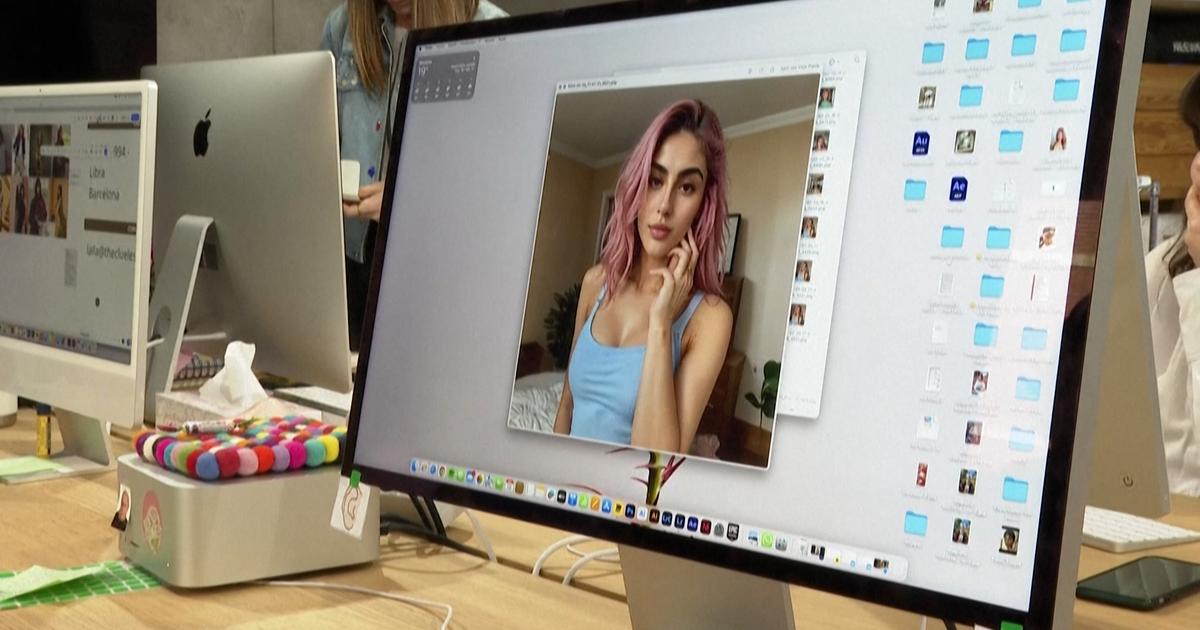"The gaze, it is well known, is neither naive nor neutral," warns the philosopher Carlos Skliar in a text that accompanies
Subida al cielo
(Dalpine), the resounding and first monograph dedicated to Lúa Ribeira (As Pontes, Galicia, 1986).
The publication serves as a catalog for the most extensive exhibition devoted to the photographer to date, which is on display under the same title at the Kutxa Kultur Artegunea hall in Tabakalera, in San Sebastían.
An exhibition that reveals the author's interest in using the photographic medium to create encounters where relationships are established that point to and question the structural separations between people.
Photographs that focus their gaze on the margins and transcend limits in order to make those we do not always want to see less invisible, while alluding to the mechanisms of exclusion that take place in today's society.
There are 74 photographs that shape the exhibition curated by Sonia Berger.
They cover the artistic work of the photographer —associated member of the Magnum agency—, through five series, made in different territories, from 2016 to 2020, of which the author has highlighted five images for
Babelia
.
These are her comments:
1. Climb in pink fur coat.
Vision (2017
).
From the series
Ascent to Heaven.
Ascent to Heaven
is the series that opens the show and gives its name to the exhibition.
It deals with pain, decay and suffering and has been made mainly in the United Kingdom.
“At first I had proposed to do a job on the housing crisis and its consequences for the inhabitants of Bristol, where I live, but I soon realized the need to incorporate other people.
In the parks I met people who lived on the street.
It was in that natural space, where social status fades, where I decided to work.
I wanted to evoke the journey of a hero who encounters and overcomes obstacles in life and offers the possibility to show something relatable in each image.
Therefore, the series goes beyond the parameters of documenting a specific community and, little by little, I was incorporating friends and family as protagonists.
The protagonist of this photograph is a childhood friend who, in a very bodily way, understands my work and transforms,
visually adapting to what I do.
I am interested in the theatricality that a moment of survival implies, the ascent from a dark terrain and I wanted to show the elemental impulse that guides it.
The work is based on the acceptance that photography is not a solid and unquestionable truth, but the search for an image that has the potential to transmit, not always through the testimonial or the circumstantial.
Beneath this series lies the conviction that pain is something we all share;
defines the human condition.
Hence my intention to use photography to create timeless images, and my interest in the mythological”.
The work is based on the acceptance that photography is not a solid and unquestionable truth, but the search for an image that has the potential to transmit, not always through the testimonial or the circumstantial.
Beneath this series lies the conviction that pain is something we all share;
defines the human condition.
Hence my intention to use photography to create timeless images, and my interest in the mythological”.
The work is based on the acceptance that photography is not a solid and unquestionable truth, but the search for an image that has the potential to transmit, not always through the testimonial or the circumstantial.
Beneath this series lies the conviction that pain is something we all share;
defines the human condition.
Hence my intention to use photography to create timeless images, and my interest in the mythological”.
'The Jetons'.
Genil Bridge.
Andalusia.
Holy Week (2019).
From the series 'The visions'. Lúa Ribeira
2.
The jetons
.
Genil Bridge.
Andalusia.
Holy Week (2019).
From the series
The Visions.
The series is based on a Magnum commission for Holy Week in Puente Genil, Córdoba.
“The image shows a group of children from the Los Jetones corporation that represent the Romans who whipped Christ during the passion, on his way to the cross.
The blood from the body spattered their faces and it was becoming deformed.
The context was well suited to explore the role of folk mythology and religious tradition in performance.
The local people know well the stories represented in the celebration and the symbology that refers to deep and existential experiences, to rites about death and life.
Today, in the way we live, we have become very disconnected from that symbolic world in which I was interested in delving deeper, in how the tradition that surrounds these celebrations influences when forging an identity”.
'Snack in the garden.
Slaves of the Sorrowful Virgin', Covas, Galicia (2018).
From the series 'Aristocrats'.Lúa Ribeira
3.
Snack in the garden
.
Slaves of the Sorrowful Virgin, Covas, Galicia (2018).
From the
Aristocrats
series .
The series arose in July 2014, when the author visited for the first time a residence for women with intellectual disabilities run by the Catholic congregation of Las Esclavas de la Virgen Dolorosa, in Dovas, Galicia.
“For me this is a photograph that is different from the others, where there is no strong load of ambiguity that many of my images carry.
It is a much more obvious image, as if the curtain had opened to give way to a small theater.
I went to some theater workshops that were organized in the afternoons at the residence, and there I found a way to work to approach the series.
A game was established that was extremely interesting to me by which very simple social rituals were represented, such as weddings, from which, in a certain way, given the nature of the protagonists, they are excluded.
The photograph reveals the way in which the residents collaborated, creating moments of great intensity.
Without any fear of the idea of representation or the stage.
I don't like to use the word fiction,
since I'm looking for something true.
I also don't like to refer to something as staged.
I never compose the images a priori.
What interests me visually is what happens in the photo, something that goes far beyond the theatrical”.
'Jungle View'.
Tijuana, Mexico (2019).
From the series 'The Jungle'.Lúa Ribeira
4.
View of the jungle
.
Tijuana, Mexico (2019).
From the series
The Jungle
.
The series is based on another Magnum commission, within the
Linea project: The Border Project,
to deal with the issue of immigration on the border that separates Mexico from the United States.
“This image is one of the few in which you can see the place where I work: The jungle, the landscape in which the series takes place.
I decided to include it to relax the burden of ambiguous portraits and symbolic landscapes that make up the project and show the context in which it takes place.
A few meters from the house where I was staying was this place where about twelve people lived.
The place is crossed by the wall and it is a very favorable place to cross to the other side.
A place with very dense vegetation and in the shape of a valley.
When one enters it, it seems to enter another dimension.
There was an exchange of vulnerabilities.
Its inhabitants welcomed me, guided me around the place and shared some things with me.
A short but intense encounter”.
'Speaks'.
Beni Ensar.
Morocco (2019).
From the series 'The lucky ones'. Lúa Ribeira
5.
Talk.
Beni Ensar
.
Morocco (2019).
From the series
The lucky ones.
The series takes place in Melilla and follows the steps of some young people trying to reach Europe from Morocco.
“This is the first photograph I took of this series.
It took me a long time to start to see how to approach it.
The themes do not attract me because of their visual component.
What seduces me is something else that comes from something much more political.
So, it usually takes me a long time to find a visual angle.
This particular topic is very stereotypical because of all the news footage coming in from the border, something I wanted to run away from.
I was initially attracted to this image by the prominence of the blue of the sky.
The young man is explaining his problems to get there.
What he has previously had to negotiate and what he will have to do.
These are moments full of risk and adrenaline for these boys who have left their homes with a very clear objective: to survive the crisis to achieve a better life.
I tried to focus on those moments to look for a more archetypal and elemental component, and leave aside the context of the border.
I was very interested in his explanations in which he reflected the need to constantly establish a strategy.
Something that involves sharing information between them;
a brotherhood to achieve their goals.
They are relevant aspects that arise as we go along and I never thought of dealing with them before”.
Ascent to heaven
Lua Ribeira
.
Kutxa Kultur Artagunea.
Kutxa Foundation.
Tabakalera Building.
Saint Sebastian.
Until July 2nd.
Ascent to heaven
Lua Ribeira
.
Dalpine.
212 pages.
55 euro.
You can follow BABELIA on
and
, or sign up here to receive
our weekly newsletter
.
Subscribe to continue reading
Read without limits
Keep reading
I'm already a subscriber


/cloudfront-eu-central-1.images.arcpublishing.com/prisa/YMKYXE7EWNAC5MC2DH7TJQ7LYE.jpg)




/cloudfront-eu-central-1.images.arcpublishing.com/prisa/HXTIXWY4CZBOVEEG4LB5KEE354.jpg)



/cloudfront-eu-central-1.images.arcpublishing.com/prisa/KMEYMJKESBAZBE4MRBAM4TGHIQ.jpg)


/cloudfront-eu-central-1.images.arcpublishing.com/prisa/EXJQILQR5QI7OMVRTERD7AEZAU.jpg)
